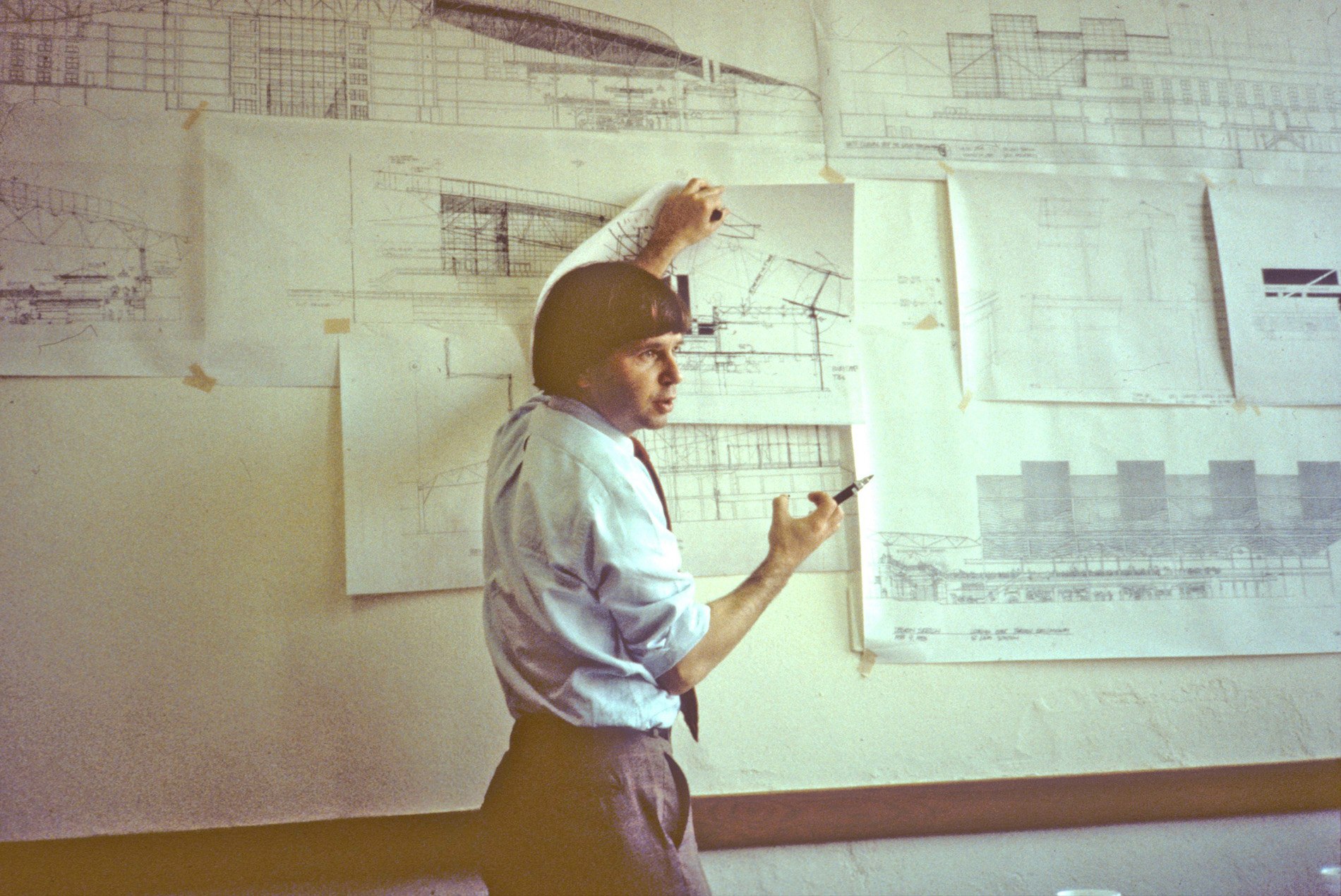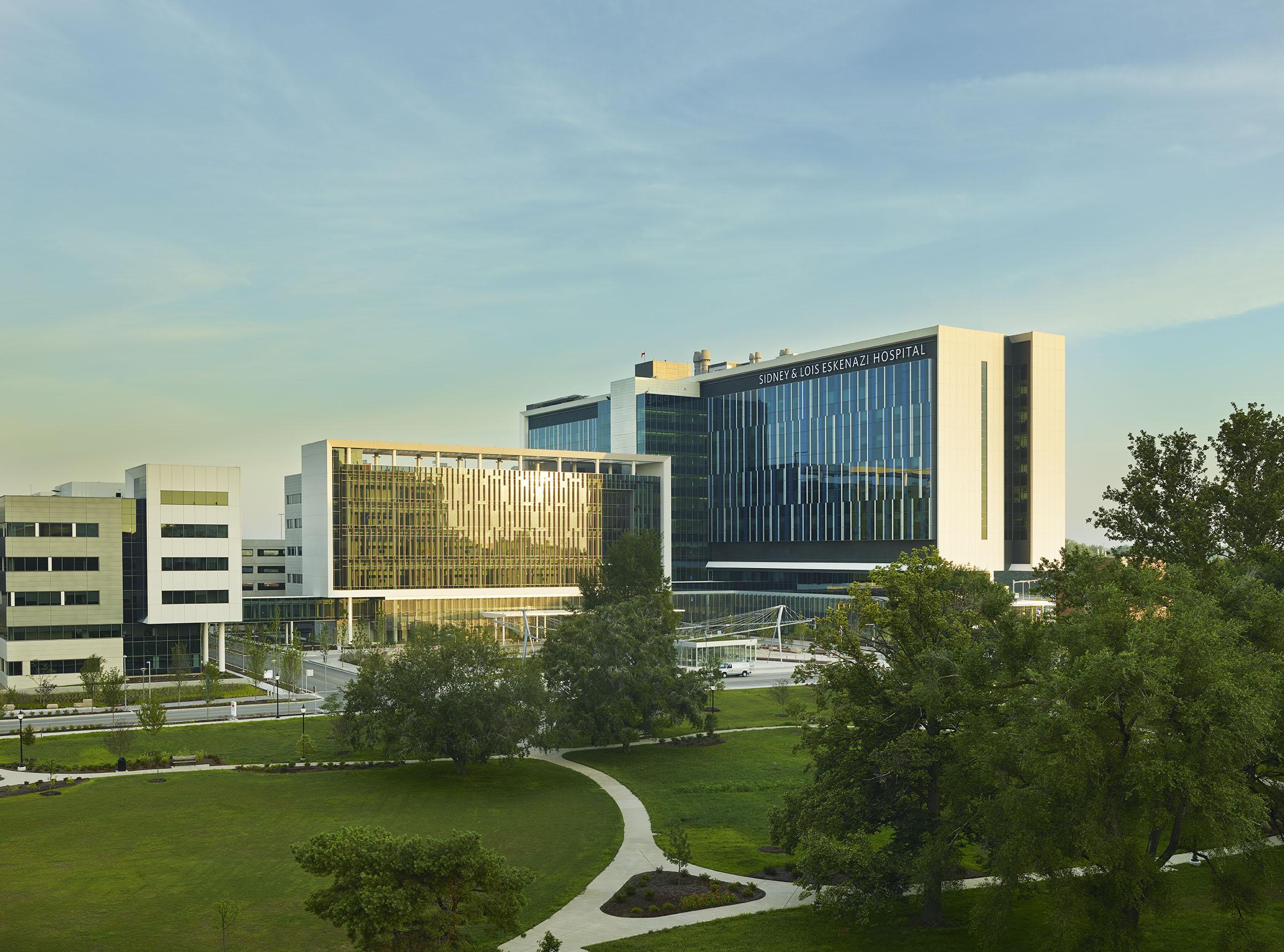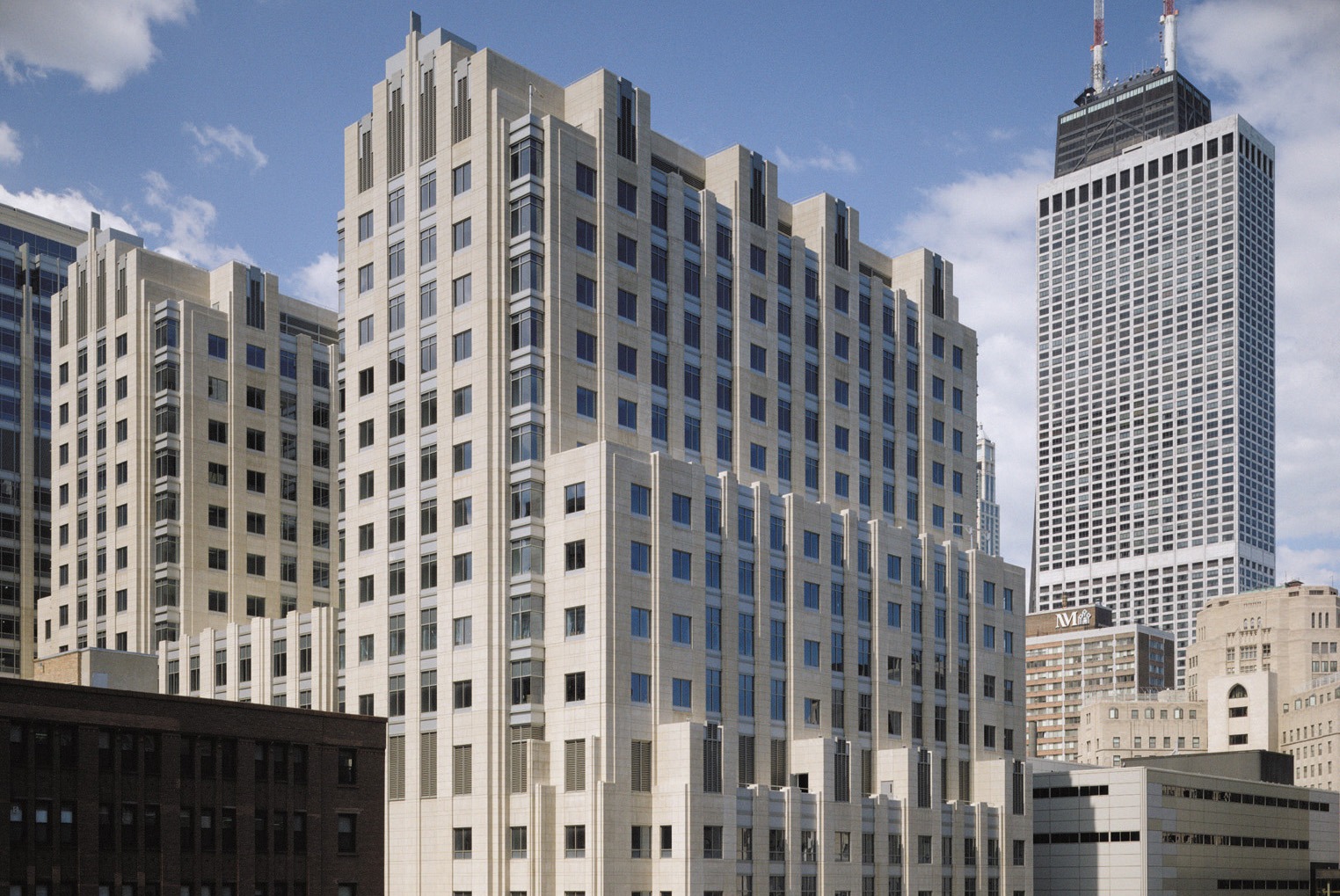Winkelman’s work at HOK from 1980-2012 elevated medical facility design and helped establish the firm’s global Healthcare practice.
Henry “Hank” Winkelman, AIA, ACHA, LEED AP, a design principal who shaped contemporary healthcare design over more than three decades at HOK, died at his home in St. Louis on December 27, 2024. He was 83.
Paul Strohm, AIA, ACHA, LEED AP, director of Healthcare at HOK and Winkelman’s longtime colleague, reflected on his impact: “Hank was an incredible man, mentor, partner and friend whose innovative design work touched millions. He brought a rare vision to healthcare architecture— creating buildings that integrated perfectly with their surroundings, functioned brilliantly over time and achieved true elegance. But what drove him most was his deep belief that architecture should honor the human spirit by creating environments that truly heal.”
“I really enjoyed working with Hank and will always remember the sheer joy in his face when we did an aerial photo shoot by helicopter of NewYork-Presbyterian Hospital over the East River and Manhattan,” said Kenneth Drucker, FAIA, LEED AP BD+C, design principal in HOK’s New York studio. “His exuberance, passion and joy were infectious and he will be greatly missed.”
Born in Schenectady, New York in 1941, Winkelman graduated from East High School in Memphis, where his interest in architecture was sparked by his cousin, architect Walk C. Jones, Jr. After spending summers working in Jones’ architectural office and traveling in Europe, he began his formal architectural studies at Tulane University.
Winkelman completed his Bachelor of Arts in Architecture at Rice University in 1965. Following graduation, he served two years in the U.S. Navy based in Sasebo, Japan. He then returned to Rice where he earned his Master of Architecture degree in 1972. His thesis on the evolution of hospital design marked the beginning of what would become a lifelong love for healthcare architecture.
Winkelman’s early professional experience came at Caudill Rowlett Scott in Houston, where he advanced to vice president. He then continued to focus on healthcare work as a principal and senior designer at the Falick/Klein Partnership in Houston. HOK cofounder Gyo Obata recruited him in 1980 to help develop HOK’s healthcare expertise, starting with a replacement hospital project for University of Wisconsin in Madison.

During his time at HOK, Winkelman helped build the firm’s new Healthcare practice into an industry leader. As design principal for the practice, he tackled increasingly complex projects while advancing hospital design. In design meetings, Winkelman would often close his eyes and describe complex hospital operations in precise detail—mapping out everything from patient flows and clinical interactions to how existing buildings and infrastructure could be shifted to accommodate new additions. His detailed sketches turned these mental models into functional, beautiful spaces that supported medical care and healing. Colleagues marveled at his genius for mentally constructing healthcare environments.
 Sidney and Lois Eskenazi Hospital in Indianapolis
Sidney and Lois Eskenazi Hospital in Indianapolis
Winkelman led numerous landmark healthcare projects at HOK. The Sidney and Lois Eskenazi Hospital in Indianapolis integrated 327 beds, 200 clinic exam rooms and a Level One trauma center within 1.4 million square feet. At Ohio State’s Wexner Medical Center, he designed a million-square-foot cancer hospital combining 420 beds with research space. His Northwestern Memorial Hospital projects in Chicago, which established HOK’s presence in the city, featured a 2.1-million-sq.-ft. facility housing 492 beds for inpatient and outpatient care and the New Prentice Women’s Hospital. In Milwaukee, he led the design of Columbia St. Mary’s Hospital Lake Drive Campus, a 1.5-million-sq.-ft. medical center encompassing 495 beds, two medical office buildings and structured parking.

Northwestern Memorial Hospital Campus Redevelopment in Chicago
In New York, Winkelman oversaw NewYork-Presbyterian Hospital’s 900,000-sq.-ft. modernization and created comprehensive capital plans linking Presbyterian with Weill Cornell and Columbia medical institutions. His St. Louis portfolio included the award-winning Center for Advanced Medicine at Barnes-Jewish Hospital and the Farrell Learning Center, both located on the Washington University Medical Campus.
Beyond healthcare, Winkelman led the transformation of St. Louis’s historic Union Station from one of the largest U.S. rail terminals into an 825,000-sq.-ft. mixed-use development. Completed in 1985, the $135 million project integrated a hotel, retail shops and restaurants while preserving the building’s historic 1894 grandeur.
Winkelman was a member of the American Institute of Architects and the American College of Healthcare Architects.
After retiring from HOK in 2012, he remained active in the architectural community, serving as a healthcare design consultant on projects both nationally and abroad while participating in AIA programs and community planning initiatives. His creative vision and passion for architecture never dimmed, and his influence continues through the healing environments he created and the generations of architects he mentored.
He is survived by his children Tamara McGuire; Henry Tanner Winkelman III; and Sarah Holtrup. He was preceded in death by his wife, Pamela, in 2010 and his daughter, Aranza Kottmeyer, in 2018.
A celebration of life service will be held Saturday, January 11, 2025, at 11:00 a.m. at The Church of St. Michael & St. George, 6345 Wydown Boulevard, St. Louis, MO 63105. Memorial contributions may be made to the charity of one’s choice.
